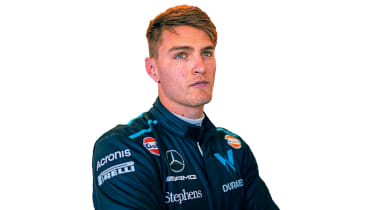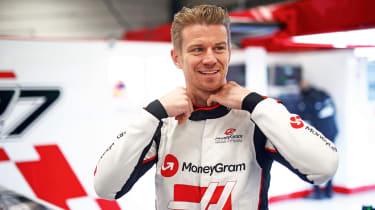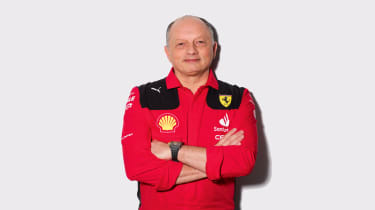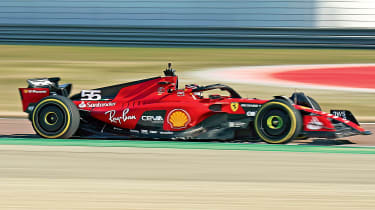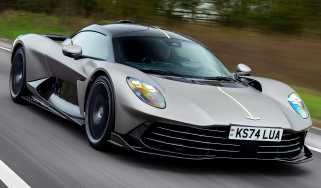The 6 BIG things to look out for during the 2023 Formula One season
As the Formula One season kicks off for 2023, here are some of the biggest things to keep an eye out for
The 2023 Formula One season is almost upon us. Cars have been revealed, drivers have slipped into their race suits, and testing has taken place before the season-opening Bahrain Grand Prix on 5 March. Over the course of 23 races, 20 drivers will fight for title glory, but there are so many fascinating questions heading into this season.
Will Ferrari be able to combine consistency with its pace from last year? Has Mercedes managed to turn around its difficult 2022 season to bring itself back into title contention? Or has Red Bull once again produced a winner – and can anyone get close to Max Verstappen?
Here, we run through some of the key talking points ahead of the opening race.
1. New drivers
The 2023 grid has seen a handful of driver transfers and there are some new names to look out for, with rookies joining the field, plus some familiar faces. Perhaps the most exciting of all is the competitive debut for Oscar Piastri; the young Aussie is one of very few drivers to make it to F1 that have not only won, but dominated their Formula 3 and Formula 2 campaigns, with championship victories in 2020 and 2021.
Sadly, with no seat available for him last year, Piastri had to watch from the sidelines, but he’s jumping into a coveted seat at McLaren for his first year, so strong results are possible. Another F2 graduate is Logan Sergeant. The American took fourth in the F1 feeder series last year, and joins Alex Albon at Williams.
2. The return of some old faces
There’s also one familiar driver returning to the F1 scene. Nico Hülkenburg has been a super sub for the Aston Martin squad, filling in for first Sergio Perez and then Sebastien Vettel when each driver tested positive for Covid-19. Now for 2023, he’s joined the Haas squad, with the US team turning to experience to replace the promising but accident-prone Mick Schumacher.
Schumacher hasn’t completely disappeared from the grid, however, having joined Mercedes as a reserve driver. Also making his full debut this year is Nyck de Vries. The 2020/21 Formula E world champion impressed with his stand-in performance for Williams in Monza last year, and that attracted the attention of Alpha Tauri, which has paired the Dutchman with Yuki Tsunoda.
3. Driver and staff switches
Existing drivers have also been busy finding new teams this season, too. The highest-profile driver transfer is that of Fernando Alonso; the 2005 and 2006 World Champion jumped ship from Alpine to take the place of the now-retired Sebastian Vettel at Aston Martin.
With Alpine finishing a strong fourth in last year’s championship and Aston Martin only seventh, that might seem like a backward step, but the Spaniard believes that “the scale of the ambition and determination” he can see at the Silverstone-based outfit matches his own.
Alonso is replaced at Alpine by Pierre Gasly, giving the team an all-French driver line-up alongside Esteban Ocon.
There’s been a great shuffle among the team bosses, too. Mattia Binotto has vacated his team principal role at Ferrari to be replaced by former Renault and Sauber boss Frédéric Vasseur, while Andreas Seidl has moved from McLaren to become CEO of Sauber/Alfa Romeo, with Alessandro Alunni Bravi appointed to work with Seidl as team principal.
4. Bare carbon
If there’s one trend that became clear with each 2023 new-car unveiling, it’s that lots of colour has been ditched in favour of unpainted carbon fibre. This is no coincidence; teams throughout the grid are desperate to shave vital weight from their cars – even paint – in order to meet the minimum target of 798kg.
Excess weight costs time on track, and with slightly heavier 2023 cars due to a new construction of Pirelli tyres and reinforced roll hoops following Zhou Guanyu’s horror crash at Silverstone last year, it’s even tougher than before to meet that minimum weight.
Speaking to Auto Express at the launch of the Alpine A523, team principal Otmar Szafnauer highlighted the challenges of saving weight to the detriment of aerodynamic efficiency, or worse, reliability. “We look everywhere to save the weight, and you’re making trade-off decisions between the performance you get from the weight that you’re lowering, and the performance that you lose from making some things lighter that you shouldn’t.”
5. Subtle rule changes
Following some of the most wide-ranging regulation changes the sport has ever seen in 2022, the rules this year are more stable. There are still some tweaks to look out for, though.
Following the extreme bouncing – known as porpoising – that some teams suffered from at the start of the 2022 season, changes to mitigate these issues include raising the floor edge by 15mm (it now also must be stiffer to combat any possible flexing) and the rear diffuser fins by 10mm.
Already stringent aerodynamic regulations will become even tighter, with creative designs by Mercedes and Aston Martin outlawed for this season. A tougher roll hoop and larger rear-view mirrors are both in place to improve safety, too.
6. A third round in the USA
The Netflix docu-series Drive to Survive has helped the popularity of F1 explode in recent years, particularly in North America. F1 bosses have been keen to capitalise on that Stateside demand, and this year will see races in Austin and Miami joined by a third event in Las Vegas.
The sport has raced there before, although the searing heat and underwhelming Caesars Palace car park circuit only lasted for 1981 and ’82. This time, the track will be a full street circuit that runs along the Las Vegas Strip itself, and the race will take place at night. Vegas forms part of a huge 23-race calendar this year. The season starts in Bahrain, ends in Abu Dhabi, and the British Grand Prix maintains its traditional spot from 7-9 July.
Now find out more about this year's cars and their drivers…
Find a car with the experts


